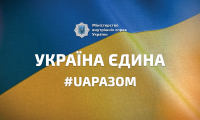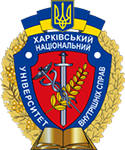Scientific seminar ‘Technogenic hazards and their damaging factors in terms of genesis and mechanism of impact’
On 30 September 2025, Inna Deriabina, senior teacher of the Air Transport Department of the Kremenchuk Flight College of KhNUIA, conducted a scientific seminar ‘Technogenic hazards and their damaging factors in terms of genesis and mechanism of impact’ for students of the TMdsr-25-1b educational and professional programme ‘Maintenance and Repair of Aircraft and Aircraft Engines’, majoring in J6 Air Transport.
The scientific seminar addressed issues related to the classification of technogenic threats and their detrimental impact on humans, society, and the environment, including an analysis of the causes (genesis) and mechanisms of action (impact) of these threats.
The participants considered specific examples of technogenic accidents and their consequences. They analysed methods for assessing risks and preventing technogenic threats. In addition, they discussed ways to minimise the impact of damaging factors on humans and the environment. Particular attention was paid to discussing the genesis of technogenic hazards as a study of the causes leading to accidents and disasters, namely:
– technical factors: equipment malfunction, design errors, violation of operating rules;
– human factor: violation of technological processes, inattention of personnel, insufficient qualifications;
– environmental factors: the impact of natural phenomena (earthquakes, floods) on man-made objects, which can lead to accidents.
– socio-economic factors: insufficient funding for safety, outdated equipment, and imperfect legislation.
Conducting scientific seminars allows students to gain a deeper understanding of the specifics of their specialty, broaden their worldview, and helps form the appropriate level of knowledge in risk theory, fire and environmental safety. It also involves the application of software for monitoring and forecasting risk levels in a technogenic environment, and helps develop an initial understanding of the ecological consequences of harmful substances and radiation pollution during peacetime and wartime, as well as protective measures to mitigate their negative effects.





